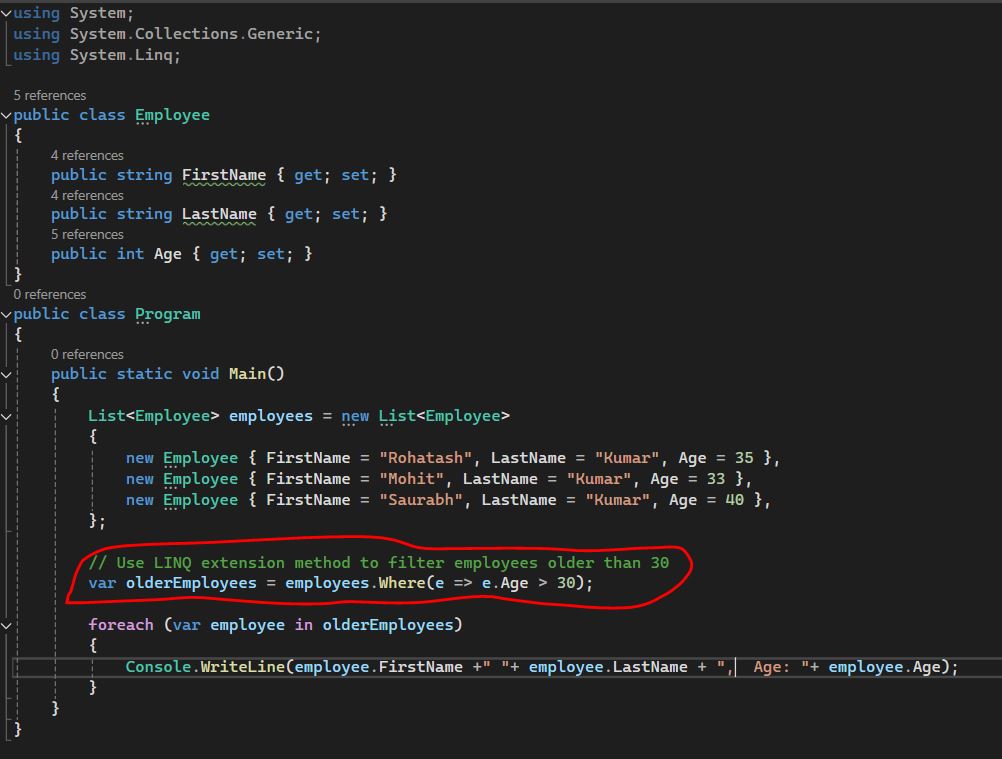Extension Method
In this article we are going to discuss about Extension Method with examples in C#.
What are Extension Methods in C#? When to use extension methods?
An Extension Method lets you add new methods to an existing type (class, struct, or interface) without modifying the original source code or creating a derived type. Whether you're using LINQ for querying collections or configuring middleware in ASP.NET Core, extension methods provide a powerful and flexible way to extend the functionality of existing types.
Extension methods allow you to add new methods to existing types without modifying their source code.
Static methods inside a static class.
The
first
parameter is preceded by the
this
keyword - it tells C# which type the method
extends.
Example
using System;
public static class StringExtensions
{
public static string CapitalizeFirstLetter(this string str)
{
if (string.IsNullOrEmpty(str))
{
return str;
}
return char.ToUpper(str[0]) + str.Substring(1);
}
}
public class Program
{
public static void Main()
{
string name = "rohatash";
string capitalized = name.CapitalizeFirstLetter();
Console.WriteLine(capitalized); // Output: Rohatash
}
}Output

Real-World Example
1. LINQ Extension Methods
One of the most well-known uses of extension methods in the real world is LINQ (Language Integrated Query) in C#. LINQ provides a set of methods for querying collections, such as Where, Select, OrderBy, etc. These methods are implemented as extension methods on the IEnumerable<T> interface.
Example - Filtering a Collection
Suppose you have a list of employees, and you want to filter out employees who are older than a certain age.

In this example, Where is an extension method defined in the System.Linq namespace. It allows you to filter the List<Employee> based on a predicate.
2. Extension Methods in ASP.NET Core
In ASP.NET Core, extension methods are used extensively to configure services and the application pipeline. For example, configuring middleware in the Startup class uses extension methods like UseRouting and UseEndpoints.

Prev Next
